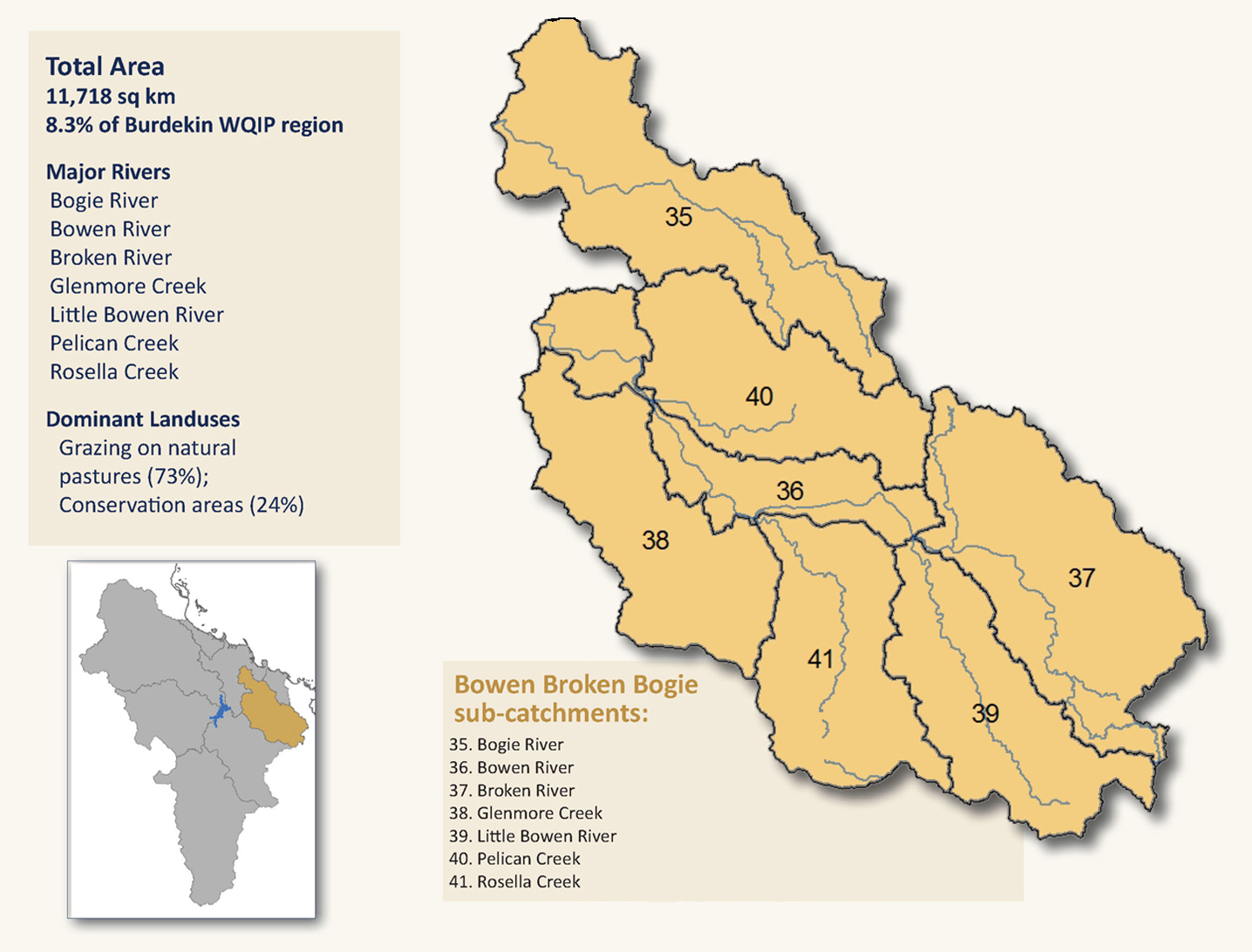LDC producing great outcomes for landholders and water quality
Targeted hotspot for sediment and nutrient reduction
The BBB catchment covers an area of 11,718km2 making up 8.3 per cent of the Burdekin River Basin.
Despite covering a small section overall, the BBB generates almost half of the fine sediment exported to the Great Barrier Reef. For this reason, it is a targeted hotspot for sediment and nutrient reduction.
The BBB catchment is divided into seven major subcatchments: Bogie River, Bowen River, Broken River, Glenmore Creek, Little Bowen River, Pelican Creek and Rosella Creek.
The dominant land use is grazing, with 92 per cent of the catchment under grazing management.
The Accelerated Grazing Support in the BBB (Landholders Driving Change) project, in partnership with the Great Barrier Reef Foundation (GBRF), is an investment of $5 million, to improve the resilience of the Great Barrier Reef through targeted water quality improvements.
The three-year project is rolling out a range of landscape repair options to improve water quality, including grazing practice change, small and large-scale gully remediation, and a rehydration site. The project wraps up in June 2024.
It committed to meeting a sediment target of 46,600 tonnes to achieve an enduring long-term reduction in end of catchment pollutant loads from the BBB. This will be exceeded by almost 300 tonnes.
What’s being done:
A total of 29 infrastructure projects have been completed or are currently being carried out, including:
- 15 projects aimed at managing grazing in upland country;
- 7 managing riparian zones;
- 2 managing multiple land types;
- 4 small-scale gullies; and
- 1 large-scale gully.
The project has built on the success of the Queensland Government-funded Burdekin Major Integrated Project (LDC) 2017-2021 to:
- reduce sediment runoff from BBB grazing lands into local waterways and the Great Barrier Reef;
- reduce sediment runoff through small-scale and large-scale gully remediation activities to improve landscape function for improved water quality; and
- work with other land managers and regional stakeholders to develop activities that will lead to a reduction in end of catchment fine sediment loads from the BBB.

